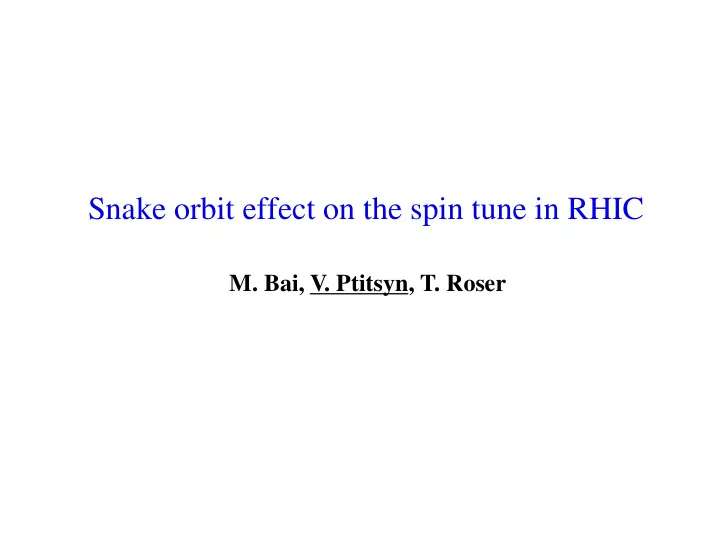

Snake orbit effect on the spin tune in RHIC M. Bai, V. Ptitsyn, T. Roser
Spin tune versus snake orbit angle Making use of the depolarization by 0.75 Example of measurements done in Blue at 250 GeV (second order) spin resonance: - vertical betatron tune is put sufficiently close to 0.75 (in this example, Q y = 0.73) -gradual change of the snake orbit angles causes the spin tune shift from ½ and therefore the shift of spin resonance from 0.75 -the depolarization is observed when the spin resonance shifted to the location of Q y Goals: • To verify analytical formulas for spin tune dependence on snake orbit angle • To verify the value of the spin tune itself Horizontal orbit angle measured, using BPMs, at 3 o’clock snake minus similar angle measured at 9 o’clock snake
Spin tune versus snake orbit angle (2) sn sn 3 x x - measured snake orbit angle difference sn 9 3/4 sp 2 sn 1 G 1 Conversion of the measured orbit angles to the spin tune shift, sn 0 using the analytical formula works very well! 2 The depolarization happens at the locations of the vertical betatron tunes during the measurements (dashed lines) 100 GeV Orbit angle measurement Spin tune shift error: BPM offsets, quad due to a snake error misalignments shift 250 GeV Measurements done at two different energies allows to calculate sp and 0 (for Blue beam): sn = 4.4 (+-2.5) 10 -3 - may be consistent with small energy dependence of snake rotation axes 0 = 17 (+-15) murad 0 calculated from reversed BPM offsets error: -24 murad
Spin tune on the ramp Using the experimental results we can evaluate the spin tune and 0.7 resonance shift during the course of the acceleration. Spin tune shift from 0.5 With well corrected snake orbits the shift of 0.7 resonance was quite small on the whole ramp and could not be a cause for the depolarization on the ramp Snake resonance split and shift from 0.7 The plot presents the case of the snake orbit angle corrected to 0 according to BPMs
Recommend
More recommend